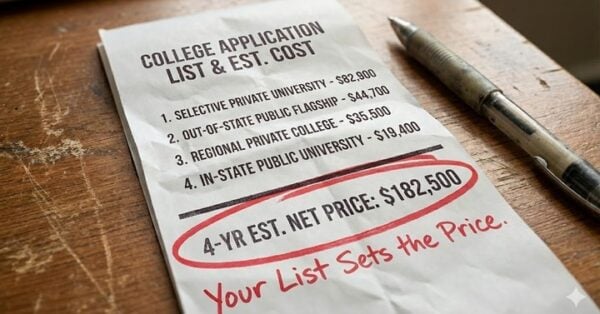This isn’t the kind of resume you’ll need when you look for your first post-college job or a brag sheet you’ve put together for someone writing a letter of recommendation, but a resume designed for a high school senior.
Why Do You Need A Resume For College Applications?
The Common Application permits students to upload an activities resume, although many colleges within the Common App system don’t accept resumes submitted this way.
If any of the colleges you’re applying to do allow it, don’t miss the chance. It’s a perfect opportunity to highlight things you weren’t able to write about in detail in your college essays.
Even if none of the colleges on your list ask for a resume, I strongly recommend you create one for the following reasons:
- to help you complete the Common Application
- to give to teachers, counselors, advisors, and coaches writing your recommendations
- to use when applying for a job or internship
- to submit when applying for a scholarship
- to give to the interviewer at an alumni or college admission interview
What Should I Put on My Resume for College Applications?
Here’s a guide to preparing a high school student resume, along with a sample to get you started.
1. Center your contact information at the top of the page. Include your full name, address, email address, and cell number.
2. Put your educational information in a separate section below your contact information. Include the following:
- The full name of your high school with its city and state.
- Your graduation date in month and year format.
- Your GPA – weighted and unweighted (note each).
- Your class rank – if your school ranks.
- Your test scores with dates given – SAT, ACT, SAT Subject Tests, and AP tests.
- Your academic honors and awards, such as honor roll or AP scholar.
- Any coursework that may not be on your high school transcript, such as a summer course taken at a college or a summer educational experience at a college.
3. Create a section for your experience (activities and jobs) during your four years of high school.
- Include your extracurricular Activities at your high school and also any outside-of-school activities and hobbies.
- Include significant work experience.
- Include significant community service/volunteer experience.
- If you have limited extracurricular activities because you had to work outside of school to support your family or you had to take care of a family member, explain that here
4. List your most recent and most important activity first. (Go in reverse chronological order.)
- For each of your high school extracurriculars, list the activity (avoid abbreviations) by category and date.
- Describe your specific role within the activity, including any leadership position you held and the school years and/or summers you participated.
- Use details to show your accomplishments such as the amount of funds raised, the number of students who joined the club you founded or the impact of your campaign.
- Put each extracurricular in a separate section with white spaces between the sections.
- Start each description with a strong action word such as founded, managed, provided, built, and led.
- For any job you had or still have, give the name of the company or group, your role, your job responsibilities, and dates.
- Omit any superficial or brief activities (such as a club you joined for six weeks in 9th grade).
5. Include a section for your special skills.
The last section of your resume is where you should list any special skills, such as fluency in Spanish, specific computer skills, proficiency in playing a musical instrument or athletic skills not described in the experience section.
In the special skills section, you could also list any time-consuming hobbies you have that do not fit in elsewhere – e.g., Spending 10 hours per week knitting baby booties to donate to homeless women’s shelters.
How to Format Your College Application Resume
Formatting is key to making your resume easy to scan. Here are some tips to follow:
- Use a professional font
- Make your headings consistent
- Bulleted lists may work
- Use a limited amount of bold and underlining; aim for a clear and clean format
- Keep your narratives brief but detailed
- Do not abbreviate the names of groups or organizations
- Try to keep the resume to one page (unless you won a Nobel Prize in high school)
- Proofread, proofread, proofread to avoid typos, spelling errors, grammar mistakes, and punctuation problems – and ask a trusted adult to do the same.
Use this sample high school student resume as a template for creating your own.
Remember that your resume is not a do-it-once document; be sure to update it as needed. And let me stress again: You can’t proofread a resume too carefully.
You want a college admissions officer to remember you for your accomplishments, not for your typos!
_______
Use R2C Insights to help find merit aid and schools that fit the criteria most important to your student. You’ll not only save precious time, but your student will avoid the heartache of applying to schools they aren’t likely to get into or can’t afford to attend.
Other Articles You Might Like:
10 Ways a Parent Can Help Their Student Prepare for College
How to Motivate Juniors to Start the College Process
High School Resumes May Be More Valuable Than Ever for College Admissions
JOIN ONE OF OUR FACEBOOK GROUPS & CONNECT WITH OTHER PARENTS:





